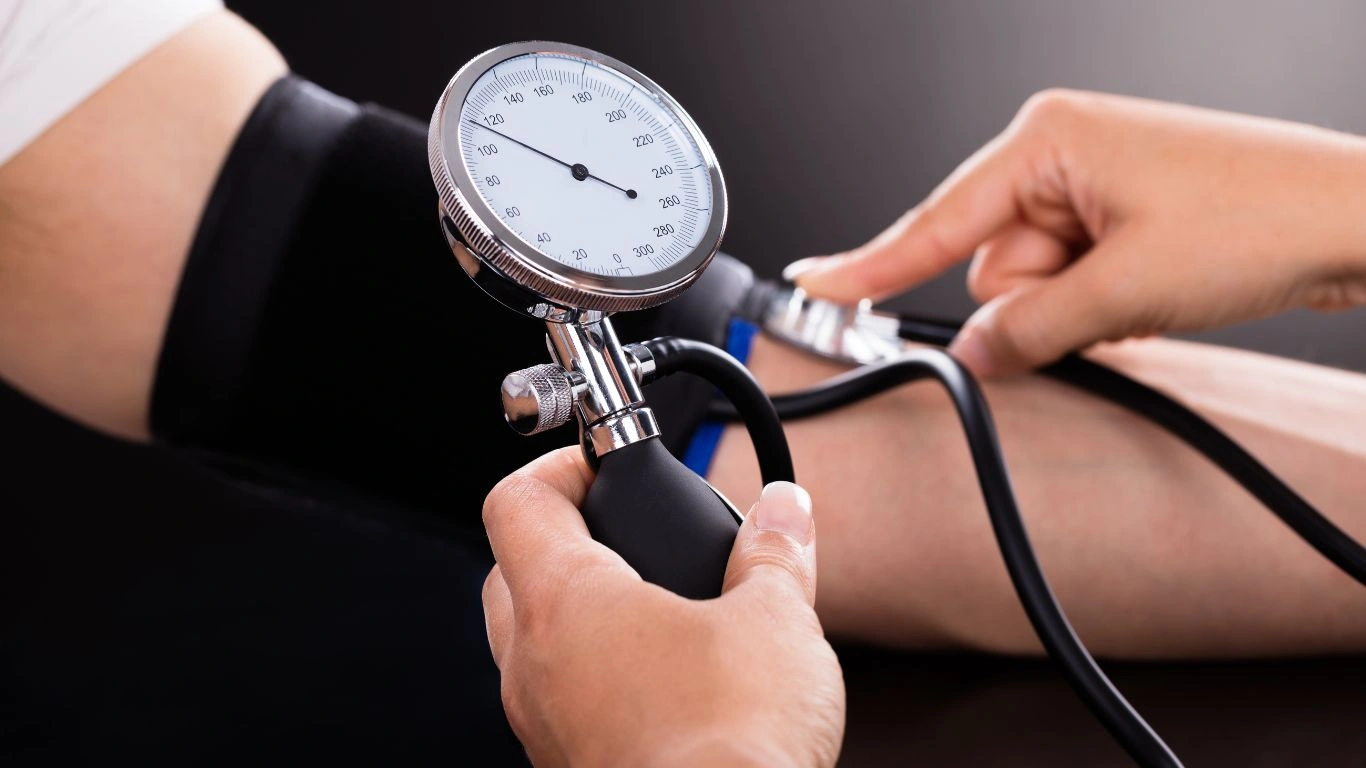Can Weather Changes Affect Your Blood Pressure? Essential Tips to Know
As an internal medicine physician with a particular focus on hypertension management, I’ve often encountered patients who wonder whether the weather plays a role in their blood pressure. It might sound like one of those questions you’d typically shrug off, but the truth is that weather changes can actually affect your blood pressure, and it’s something I want to dive into in this article. In my experience, weather shifts—especially temperature extremes, barometric pressure fluctuations, and even seasonal transitions—can have a significant impact on cardiovascular health. So, let’s explore the connection between weather and blood pressure, and why it’s something everyone should be aware of.
How Temperature Affects Blood Pressure
First things first: temperature is one of the most noticeable weather-related factors that can influence your blood pressure. Whether you’re living in a hot, humid area or experiencing the frigid cold of winter, your blood pressure is likely to respond accordingly. I’ve seen it firsthand in my practice—many patients complain of feeling dizzy or lightheaded when transitioning between a hot outdoor environment and the air-conditioned indoors. The body has to adjust to temperature changes, and this can stress the cardiovascular system.

Heat and Blood Pressure
When the weather heats up, the body works harder to regulate its internal temperature. Blood vessels dilate to help cool the body down, which can lower your blood pressure. For some individuals, this might be a relief, especially for those who typically experience high blood pressure in cooler conditions. However, for others, the heat can cause issues, particularly if they’re dehydrated or already at risk for cardiovascular problems. One thing I always remind my patients is to stay hydrated during the warmer months—dehydration can exacerbate the effects of heat on your blood pressure.
Cold Weather and Blood Pressure
On the flip side, when temperatures drop, your body tends to conserve heat by constricting blood vessels, which raises blood pressure. I can’t tell you how many patients have shared their experiences with me during the winter months—feeling more tense and noticing an increase in blood pressure readings. This is especially true if you’re shoveling snow or doing any activity that adds strain to your body. Cold temperatures combined with physical activity can really put a strain on the heart and the circulatory system. It’s important to be aware of this, especially if you’re someone who already has high blood pressure or other underlying conditions.
Barometric Pressure: A Silent Influencer
Another key player in how weather affects your blood pressure is barometric pressure. Now, you might be thinking, “What is barometric pressure, and how does it impact my health?” Barometric pressure is essentially the weight of the atmosphere around us, and it changes with weather patterns. When barometric pressure decreases—like before a storm or during a rainy period—the body can experience a change in its blood circulation, and this may result in a drop or an increase in blood pressure. As you can imagine, this isn’t something most people think about on a daily basis.

Pressure Drops and Blood Pressure Variations
When a storm is brewing, barometric pressure typically falls, and many individuals with hypertension or other cardiovascular conditions report feeling more sluggish or having fluctuating blood pressure readings. Interestingly, the body reacts to lower barometric pressure by expanding blood vessels in an attempt to balance the internal and external pressures, which can contribute to lower blood pressure. This is why some people feel light-headed or faint during periods of low barometric pressure, especially if they’re already prone to fluctuations in blood pressure.
Pressure Rises and the Risk of Hypertension
Conversely, when the barometric pressure increases, such as during clear, sunny days or right after a storm passes, blood vessels tend to constrict, which can lead to a rise in blood pressure. I’ve seen patients experience spikes in blood pressure during such weather conditions, often without realizing the connection. So, it’s something worth keeping an eye on, especially for those with existing hypertension. Keeping track of weather patterns could potentially help manage these fluctuations.
The Role of Seasonal Changes
It’s not just temperature and barometric pressure that play a role in blood pressure; the change of seasons can also have a surprising impact. Each season brings its own set of challenges to the body, and understanding how the seasons can affect your blood pressure is essential for long-term health management. I’ve observed patients experience higher blood pressure during the winter months, and others show elevated readings when the weather transitions from the cool autumn to the warmer spring. These seasonal shifts can throw the body’s natural rhythms off balance, making it harder to maintain optimal blood pressure.

Winter Blues and High Blood Pressure
Winter is especially tricky when it comes to hypertension. Many people experience what’s called “seasonal affective disorder” (SAD) during the colder months, which can lead to an increase in stress levels, inactivity, and, for some, an increase in blood pressure. The combination of reduced sunlight, colder temperatures, and sometimes a lack of physical activity can contribute to weight gain and higher stress levels—both of which can negatively affect blood pressure. As a result, it’s important to try to stay active, even in the winter, and make sure you’re managing your mental health through these months.
Spring and Fall: Transition Periods for Blood Pressure
During the transitional periods of spring and fall, the body can struggle to adapt to the changing temperatures, which might explain why some people feel more fatigued or notice fluctuations in their blood pressure. These changes can be subtle, but for those with underlying hypertension, the shift can sometimes push their blood pressure into the high-risk zone. Regular check-ups and monitoring during these transitional months are critical.
How Stress Plays a Role in Blood Pressure During Weather Changes
When we think about weather-related health impacts, we often focus on temperature and pressure shifts. However, one factor that often gets overlooked is stress. As an internal medicine physician specializing in hypertension management, I’ve seen firsthand how weather-related stress can influence blood pressure. Think about it—you’re stuck in traffic during a storm, or you’re worrying about a cold front moving in. These weather-related stressors can trigger the release of stress hormones like cortisol, which has a direct impact on blood pressure. So, it’s not just the temperature that’s at play here—it’s the way your body responds to it mentally and emotionally.

Weather-Induced Anxiety and Hypertension
It might seem surprising, but anxiety linked to specific weather conditions can exacerbate hypertension. I’ve had patients tell me that they feel an increase in anxiety when the weather is unpredictable—whether it’s the barometric pressure dropping before a storm, or the extreme heat waves of summer. For individuals with already elevated blood pressure, these moments of anxiety can put them at higher risk for even more significant health issues. It’s not just the cold snap that makes you shiver—it’s the mental toll weather changes can take on you.
Dealing with Stress: Practical Tips for Weather-Related Blood Pressure Management
So how can you manage this stress and protect your blood pressure? One tip I give to patients is to practice deep breathing exercises or mindfulness, especially during times of weather-induced anxiety. Even just taking a few moments to focus on your breath can activate your parasympathetic nervous system, which helps calm the body down and lower blood pressure. And hey, it’s not just for relaxation purposes—it can also give you a much-needed break from the mental clutter caused by unpredictable weather shifts.
Can Humidity Affect Your Blood Pressure?
If you’ve ever spent time in a hot, humid environment, you’ve probably noticed how difficult it can be to breathe or feel comfortable. But did you know that humidity levels can also impact your blood pressure? As an internal medicine physician, I often see a direct connection between high humidity and issues with blood pressure regulation. Humidity has an impact on how the body regulates temperature, and when the air is saturated with moisture, it can make it harder for the body to cool off efficiently. This could lead to changes in heart rate and blood pressure, especially for those already at risk for hypertension.

The Impact of High Humidity on Blood Pressure
High humidity levels can cause blood vessels to expand in an attempt to cool the body down. However, this expansion can lead to a drop in blood pressure for some individuals, causing dizziness or lightheadedness. On the flip side, humidity can also strain the body by making it more challenging to stay hydrated. This lack of hydration can lead to a higher heart rate and blood pressure, particularly when paired with high temperatures. I’ve seen patients who, after spending a few hours in hot, sticky weather, find their blood pressure reading to be significantly higher than usual.
Humidity, Dehydration, and Hypertension
Dehydration is one of the biggest culprits when it comes to humidity-related blood pressure changes. When the body is dehydrated, the heart has to pump harder to circulate the blood, and this can result in higher blood pressure. Many of my patients in humid climates know this all too well—after sweating it out in the heat without drinking enough water, their blood pressure readings are often much higher. So, if you’re planning on spending time outdoors during the summer months or in a particularly humid climate, be sure to stay hydrated! Drinking water frequently is essential to maintaining a healthy blood pressure level.
Managing Blood Pressure During Weather Fluctuations
In my practice, I often advise patients on how to manage their blood pressure, especially during the fluctuating weather conditions we experience throughout the year. Whether it’s the scorching heat of summer, the cold snap of winter, or those unpredictable spring days, blood pressure management becomes even more crucial when the weather shifts. Here are some key strategies I recommend to my patients to keep their blood pressure in check during weather changes.

Monitoring Your Blood Pressure Regularly
One of the most effective ways to manage blood pressure during fluctuating weather is to monitor it regularly. I always recommend that my patients keep track of their blood pressure at home using a reliable blood pressure monitor. By keeping a record of your readings, you can identify any patterns related to specific weather conditions. Are you noticing a spike in your blood pressure during cold weather or high humidity? Tracking these changes can help you work with your healthcare provider to make any necessary adjustments to your treatment plan.
Staying Active, Even in Extreme Weather
Exercise plays a big role in managing blood pressure, and this is especially important during times of weather change. Yes, even in the winter or when it’s particularly hot outside, staying active is essential. Regular physical activity helps your heart stay healthy and your blood vessels stay flexible, which can help regulate your blood pressure. Of course, the type of activity will depend on the weather—during the winter months, you might prefer indoor exercises like yoga or swimming in heated pools, while summer might be perfect for outdoor walks. The key is to find a routine that works for you, regardless of the temperature outside.
Adjusting Your Diet for Weather-Related Health
Another way to manage your blood pressure during changes in weather is to make sure your diet supports cardiovascular health. Eating foods rich in potassium, magnesium, and omega-3 fatty acids can help reduce blood pressure. Additionally, maintaining a balanced diet that helps you stay hydrated is crucial, especially in hot and humid conditions. Drinking plenty of water, consuming fruits with high water content like watermelon, and avoiding excessive caffeine or alcohol can also help maintain stable blood pressure levels, no matter the weather.
How Weather Changes Can Affect Long-Term Blood Pressure Control
When it comes to managing blood pressure in the long term, understanding how weather impacts your cardiovascular health is crucial. As an internal medicine physician specializing in hypertension, I can tell you that this isn’t just a seasonal issue. Weather changes can contribute to both short-term fluctuations and long-term challenges for individuals with high blood pressure. The key to keeping your blood pressure in check year-round lies in adapting to these changes and making lifestyle adjustments that help manage these impacts. Let’s dive into how you can better control your blood pressure, no matter the weather.

Consistency Is Key: Stick to Your Blood Pressure Management Plan
One of the most important things I tell my patients is that blood pressure management needs to be consistent, even during those unpredictable weather changes. Yes, temperature fluctuations, humidity, and seasonal transitions might make things a little more challenging, but the key to managing your blood pressure effectively is to stay on top of your treatment plan no matter what the forecast looks like. That means keeping your medications on track, maintaining a healthy diet, and staying active regardless of whether it’s a chilly winter day or a sweltering summer afternoon.
In my experience, patients who tend to slack off on their routine during the changing seasons often experience the most difficulty in controlling their blood pressure. This isn’t about being perfect—it’s about being proactive. If you know that weather is going to throw off your routine, try adjusting your schedule or making small changes to account for those factors. This might mean shifting your walk to a cooler part of the day or increasing your water intake during particularly humid weeks. Little adjustments go a long way in the long run.
Monitor Your Blood Pressure Regularly: Technology Can Help
We live in an age where technology can assist in managing health more than ever before. Blood pressure monitors have become so advanced that many of them sync with your smartphone, allowing you to track your blood pressure readings over time. This can be particularly helpful when you notice fluctuations related to weather changes. I always encourage my patients to monitor their blood pressure regularly, especially during times when they suspect the weather might be affecting it.
For example, if you live in an area with extreme temperature changes, or if you are prone to feeling stressed when barometric pressure drops before a storm, keeping a daily log of your readings can provide valuable insights. These logs not only help you become more aware of how the weather is affecting you but can also be shared with your healthcare provider to adjust your treatment plan accordingly.
What to Do If You Experience Blood Pressure Spikes Due to Weather
It’s natural to feel concerned if you notice sudden spikes in your blood pressure, especially when the weather is changing. But don’t panic. While it’s important to seek professional medical advice if you experience dramatic increases in your blood pressure, there are a few things you can do in the moment to help mitigate these spikes.
Take Deep Breaths and Relax
If the weather is making you anxious, the first thing you should do is take a moment to calm your mind. Weather-induced anxiety is a real thing, and it can lead to an increase in blood pressure. So, if you feel your blood pressure rising during a particularly stormy day or in extreme heat, take a few minutes to breathe deeply and focus on something calming. Relaxation techniques like meditation, listening to soothing music, or practicing yoga can help lower your heart rate and, in turn, your blood pressure.
Stay Hydrated and Cool Off
Whether it’s a hot summer day or you’re dealing with high humidity, one of the best things you can do for your blood pressure is to stay hydrated. Dehydration can cause your blood vessels to constrict, leading to a spike in blood pressure. On those scorching days, make sure you’re drinking plenty of water throughout the day. It’s also a good idea to find ways to stay cool, whether that’s staying indoors with air conditioning, using fans, or taking cool showers. If you’re dealing with the cold, be mindful of how long you’re exposed to extreme temperatures, as this can cause your blood vessels to constrict, raising your blood pressure.

Working with Your Healthcare Provider During Weather-Related Blood Pressure Changes
When you’re managing high blood pressure, it’s essential to maintain a strong partnership with your healthcare provider. As the weather changes, so too should your approach to managing hypertension. If you notice significant fluctuations in your blood pressure tied to certain weather conditions, it’s important to bring it up with your doctor. They can help you adjust your treatment plan, whether that involves changing medications, increasing the frequency of monitoring, or offering specific lifestyle modifications that are tailored to your needs.
Remember, your healthcare provider is there to support you in managing your blood pressure throughout all seasons. If you’re feeling uncertain or overwhelmed by weather-related fluctuations, don’t hesitate to reach out for guidance. A thorough discussion about how weather affects your blood pressure can lead to personalized strategies to improve your overall health and well-being.
Additional Resources and Information
If you’re looking for more information on how to manage your blood pressure during changing weather conditions, there are plenty of resources available online. Websites like Health.com and NIH provide comprehensive guides on hypertension and its treatment. Staying informed and educated about your condition is one of the best ways to take control of your health, no matter what the weather throws your way.
In addition, you might find it helpful to look into community-based programs or support groups for individuals managing high blood pressure. These can offer additional tips, emotional support, and resources to make managing hypertension easier in the face of challenging weather patterns.
Disclaimer
The information provided in this article is intended for educational purposes only and should not be considered medical advice. Always consult with a qualified healthcare provider before making any changes to your treatment plan or lifestyle. The author, as a practicing physician, provides this information based on professional experience and general knowledge of hypertension management, but individual needs may vary. Please consult your healthcare provider for personalized advice and guidance.

Dr. Gwenna Aazee is a board-certified Internal Medicine Physician with a special focus on hypertension management, chronic disease prevention, and patient education. With years of experience in both clinical practice and medical writing, she’s passionate about turning evidence-based medicine into accessible, actionable advice. Through her work at Healthusias.com, Dr. Aazee empowers readers to take charge of their health with confidence and clarity. Off the clock, she enjoys deep dives into nutrition research, long walks with her rescue pup, and simplifying medical jargon one article at a time.






